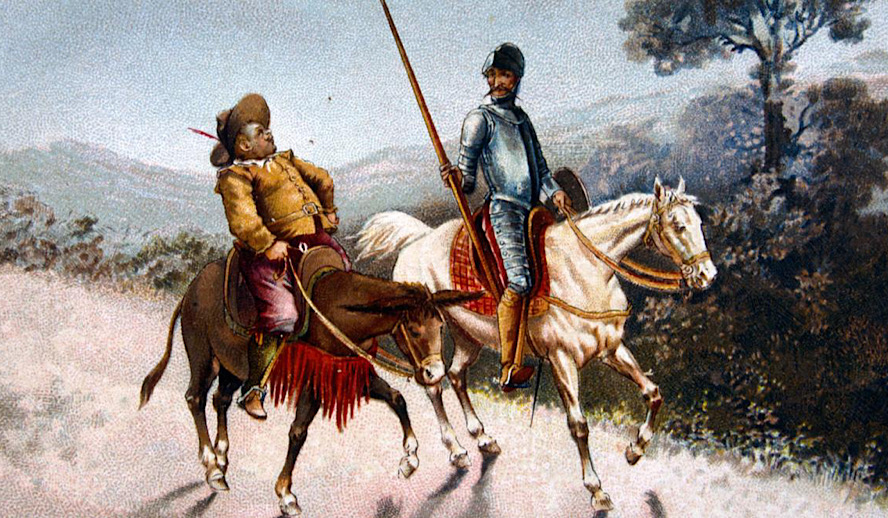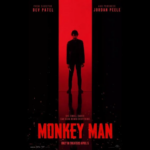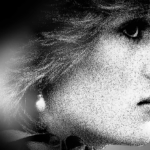Table of Contents

Photo: Don Quixote
Surely, judging a book written 400 years ago in line with modern standards of narrative and storytelling amounts to unforgivable sacrilege and infant-level ignorance, especially since the book under discussion is solely responsible for introducing most of those standards. Yet, when the Norwegian Nobel Institute polled a panel of 100 authors from 54 countries on what they considered the “best and most central works in world literature” (Milan Kundera, Doris Lessing, Seamus Heaney, Salman Rushdie, and many others were among the authors polled), the editors revealed that Don Quixote received 50 percent more votes than any other book ever written.
And most polls and inquiries held around the world in the last hundred years reveal that Miguel de Cervantes’ tale continues to receive the majority of votes, eclipsing works by Shakespeare, Homer, and Tolstoy. After the Bible, there has hardly been any book that has been more influential and important over a period of four centuries, giving birth to more than 30 film adaptations and countless plays, novels, and other works of art.
Related article: Shakespeare in Film: The Great Playwright’s Influence on Movies
Related article: A Tribute to Hayao Miyazaki: Enchanted Edifice of the Master Storyteller
Having said that, let’s nonetheless pretend that this is another hyped Netflix show and that we have to grasp the reason why it has become so popular. This allows us to ruthlessly chop this magical masterpiece into constituent parts – if we were to express our findings in very primitive, tag-like terms, words like groundbreaking, universal, and humane would almost certainly pop up.
Don Quixote – Groundbreaking
Don Quixote was, to put it simply, one of the first Western examples of a novel. The format of using chapters, characters, and a developing plot – in a way that we know stories today do – did not exist until the book was published. The context within which the novel was written is also important as popular literature at the time mainly consisted of romantic knight tales filled with faerie narratives, god-like heroes, and all the miracles and marvels of their epic journeys.
By making Don Quixote obsessed with those books and depicting his attempts at applying their shiny morality to real life, Cervantes introduced the contrast between romance and reality and planted the seed that led to both literary realism and modernism. The novel also shifts through various styles of writing and storytelling while relying a lot on satire. The obvious critique of the state, aristocracy, morality, chivalry, slavery, and the disparity of classes was very uncommon to the era in which it was written, and that greatly contributed to the introduction of the modern novel structure, which has remained largely unchanged until the 20th century.
Related article: MUST WATCH – Hollywood Insider’s CEO Pritan Ambroase’s Love Letter to Black Lives Matter – VIDEO
Subscribe to Hollywood Insider’s YouTube Channel, by clicking here.
Humane
Don Quixote was published around the same time as Shakespeare’s Hamlet (1605 and 1603), and the two respective eponymous characters are often mentioned together. While both books question what it means to be mad – or at least to be perceived as a madman – Hamlet’s individualist, egoistic nature is often compared to Don Quixote’s selfless altruism and despite his idealism, Cervantes’ character is unquestionably far more down-to-earth and close to the human heart than his Danish counterpart. In fact, from the very beginning of his journey in book one until book two, everything that Don Quixote represents is innately human.
He perceives normal, everyday life as fantastic idealism as he interprets reality through this lens; his noble ambitions of saving the world are inescapably destined to crash with the merciless, harsh realities of life. The book emphasizes how what matters is not what a thing is, but the way in which we, as individuals, perceive it. And in Don Quixote’s eyes, we look unprotected and vulnerable, so he considers it his sacred mission to save us.
From the beginning of Don Quixote’s adventures, it is impossible not to notice how a man with the best intentions to do good in the world is treated by other people. He is often beaten, laughed at, humiliated, and trifled with by almost every soul he meets on his way. But at the same time, it is often easy to overlook the resilience that this man has in pursuing his ideals despite every obstacle and hardship, so that might well be the way Cervantes hints that for some people, winning is not necessarily about getting to a happy ending but that it is about refusing to be crushed. In contrast to Hamlet, Don Quixote never abandons hope and his faith in his world is so unshakable that if he can’t adjust his vision of other people in order to fit them in it, he will simply invent them.
Thus, he invents the perfect woman Dulcinea Del Toboso, making her the model of female perfection the likes of which have never existed in the real world. However, we soon learn that Dulcinea is based on a peasant woman Aldonza who is the polar opposite of Don Quixote’s idol as she is a vulgar village prostitute with “the best hand of any woman in all La Mancha for salting pigs.” As good as Don Quixote is at idolizing people, however, he is also good at finding the right companions.
Sancho Panza is the ideal partner for his adventures as much like us, the readers, he simultaneously believes and does not believe Don Quixote – to be precise, he does believe that Don Quixote will make him the governor of the island, but he does not believe that the windmills that his patron is so fiercely tilting at are giants. Still, he obediently follows his master, despite being sometimes puzzled by Quixote’s actions.
Universal
Don Quixote was almost instantly recognized worldwide because it told a universal story. Almost every sin and deed described in the book was relatable to the simplest human living in those times and even now, in the 21st century, we still feel an affinity with a character written four hundred years ago. It is a tale about every one of us, as almost every human seeks love and fortune in his life. We all tend to exaggerate our prowess and get carried away by dreams and illusions, some of which get realized contrary to every logic, and while we encounter some great laughs, especially in the first book, Don Quixote gives no simple answers. The book is rife with allegories and symbolism, which reveal themselves very differently upon every repeat perusal of the book.
Related article: Hollywood Insider’s CEO Pritan Ambroase: “The Importance of Venice Film Festival as the Protector of Cinema”
Related article: The Masters of Cinema Archives: Hollywood Insider Pays Tribute to ‘La Vie En Rose’, Exclusive Interview with Director Olivier Dahan
Related article: – Want GUARANTEED SUCCESS? Remove these ten words from your vocabulary| Transform your life INSTANTLY
As the characters go about their adventures, we are exposed to how differently they perceive the world – through romantic vs realistic, eccentric vs common, delusional vs pragmatic points of view. Through communication, experience, and mutual admiration their influence on each other builds and results in benefit for both characters – Don Quixote becomes more grounded and Panza becomes more idealistic. This merging of the physical and the spiritual, together with the selfless nature of Don Quixote and his determination to do good deeds is often perceived as a direct allegory to the most righteous and noble human ever known to the Western world – Jesus Christ. And, in most cases, people treat Don Quixote exactly like they treated Christ.
It is thought that initially, the first book was meant as a simple parody to the knight tales of medieval times, but after its huge success, another man, not Cervantes, suddenly published its second part, attempting to steal its glory. It is thought that Cervantes was so upset that another author stole his story that he wrote his own part two with great effort to ensure it was superior not only to the fake part two but also to his own part one – and that’s where Don Quixote gained the hypostasis of a god – he is barely beaten and humiliated anymore, but despite that, his struggle and suffering only grow, leading to the crushing ending where he recovers from his madness on the one hand, but ends up in a state that could easily be interpreted as the loss of everything that made him so likable and distinguished – bravery, dedication, nobleness, resilience and, to a certain extent, sanity. To some readers, it seems as if “it was not the Don who died, it was a simple hidalgo from la Mancha.”
Related article: Improvisations that Made the Final Cut: Seven Totally Unplanned Great Moments in Cinema History | Oscars Week
Related article: In Honor of Awards Season, A Tribute to the Greatest Acting Teachers – Stanislavski, Strasberg, Adler & Meisner
To this day, the universal nature of the word Quixotic (which was born after the book, along with dozens of other idioms ) can imply both positive and negative judgment over someone’s actions. But it probably also implies a warning that whenever we laugh at that person tilting at windmills on his own, there might be a Don Quixote standing behind him. And even in the history of film, too many times have the most pragmatic committed the most Quixotic deeds – such as Terry Gilliam going out on his 30-year quest to make ‘The Man Who Killed Don Quixote’ and finally fulfilling his mission in 2019, after meeting with Adam Driver and being blown away by his “non-actor” personality.
With Adam on board and Jonathan Pryce playing Don Quixote, Gilliam created a magnificent blend of fantasy and reality and basically repeated what Adam’s character does at the end of the film, passing the baton in a race that was started four hundred years ago by the great Man of La Mancha.
An excerpt from the love letter: Hollywood Insider’s CEO/editor-in-chief Pritan Ambroase affirms, “Hollywood Insider fully supports the much-needed Black Lives Matter movement. We are actively, physically and digitally a part of this global movement. We will continue reporting on this major issue of police brutality and legal murders of Black people to hold the system accountable. We will continue reporting on this major issue with kindness and respect to all Black people, as each and every one of them are seen and heard.
Just a reminder, that the Black Lives Matter movement is about more than just police brutality and extends into banking, housing, education, medical, infrastructure, etc. We have the space and time for all your stories. We believe in peaceful/non-violent protests and I would like to request the rest of media to focus on 95% of the protests that are peaceful and working effectively with positive changes happening daily. Media has a responsibility to better the world and Hollywood Insider will continue to do so.”
Ways to support Black Lives Matter Movement to end systemic racism
More Interesting Stories From Hollywood Insider
– Want GUARANTEED SUCCESS? Remove these ten words from your vocabulary| Transform your life INSTANTLY
– Compilation: All James Bond 007 Opening Sequences From 1962 Sean Connery to Daniel Craig
– Do you know the hidden messages in ‘Call Me By Your Name’? Find out behind the scenes facts in the full commentary and In-depth analysis of the cinematic masterpiece
– A Tribute To The Academy Awards: All Best Actor/Actress Speeches From The Beginning Of Oscars 1929-2019 | From Rami Malek, Leonardo DiCaprio To Denzel Washington, Halle Berry & Beyond | From Olivia Colman, Meryl Streep To Bette Davis & Beyond
– In the 32nd Year Of His Career, Keanu Reeves’ Face Continues To Reign After Launching Movies Earning Over $4.3 Billion In Total – “John Wick”, “Toy Story 4”, “Matrix”, And Many More
don quixote, don quixote, don quixote, don quixote, don quixote, don quixote, don quixote, don quixote, don quixote, don quixote, don quixote, don quixote, don quixote, don quixote, don quixote, don quixote, don quixote, don quixote, don quixote, don quixote, don quixote

David Tsintsadze is a music industry executive, investigative reporter and a film enthusiast. As far back as he remembers, he always wanted to be involved in the entertainment industry. When that started to happen and he began to really understand how it all worked, he found that his love of both the creative arts and the relevant industry allowed him to move between the two worlds and make them relate to each other. David’s belief in meaningful entertainment coincides with Hollywood Insider’s values and in his vision, cultural intermediaries play a crucial role in shaping and exchanging culture, which he firmly believes is one of the main contribution in creation of a free and vibrant society that people want to live in.








